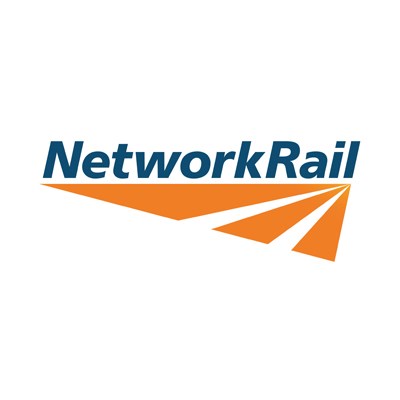Thursday 24 Mar 2016
Network Rail sets out options to enable faster and more frequent journeys for the East of England
- Region & Route:
- | Eastern: Anglia
- | Eastern
- | Southern
Enabling faster and more frequent services on the main lines between London Liverpool Street to Cambridge and Norwich will be a priority for Network Rail in the next decade, according to an updated study which looks at long-term plans for the railway in the east of England.
The company’s Anglia Route Study, which has been updated following public consultation, sets out a number of options for medium term from 2019 and a longer-term strategy to 2043.
It explores a number of options for the main lines between London to Norwich and Cambridge and their respective branch lines, as well as the lines from London Fenchurch Street to Shoeburyness and Felixstowe to Peterborough via Ely.
Richard Schofield, Network Rail route managing director, said: “Over the next three years, we will continue to deliver our Railway Upgrade Plan to deliver better journeys for passengers. However, it is clear there is still more to do to meet future demand. We have to look at ways of running more trains, and make them faster.
“With input from a wide range of organisations, including local authorities, train operators and passenger groups, the study sets out how the railway can best meet demand and support economic growth over the next decade and beyond.
“Investment will help to deliver faster and more frequent services for passengers and help to support economic growth across the region.”
The proposals in the study are neither funded nor committed and they will be used to develop detailed plans due to be submitted to Government in 2016. The government will then publish its Final Determination on Autumn 2018, committing Network Rail to deliver the schemes selected.
Following public consultation, the final version of the study sets out how:
- Network Rail has worked closely with train operators, Stansted Airport and local authorities to further understand future growth on the rail line from London Liverpool Street to Stansted and Cambridge
- Network Rail is supportive of early investment in the line between London Liverpool Street to Stansted and Cambridge to support employment and housing growth. Options for funders are set out to improve capacity and reduce journey time.
- Network Rail reiterates its support for faster journeys between London and Norwich and also increase the frequency of train services to meet increased demand
- The study recommends that to support this aspiration a package of work is required including improved rolling stock, timetable changes, which would achieve the best improvements to journey times, as well as targeted infrastructure upgrades to increase line speeds and capacity on the line.
- The study says that any changes to level crossings to improve safety would take place in close collaboration with local authorities and after consultation with residents
- The options explored in the report include additional platforms at Liverpool Street to increase capacity, upgrading signalling technology to run more trains on the existing network, adding an additional track to Trowse Swing Bridge, installing a loop (new track) at Haughley Junction and north of Witham to separate passenger and freight services
Forecasts show that, within a decade, demand for rail travel on the Great Eastern Main Line into Liverpool Street from stations in Essex is expected to grow by 52%, with demand from stations in Suffolk and Norfolk expected to grow by 32%.
Over the same period, demand on the West Anglia Main Line, which runs from Cambridge to Liverpool Street, is expected to grow by at least 18% depending on housing growth. Forecasts show that freight demand is expected to grow by an annual average of 2.9% in the next three decades
The study also considers further doubling of the Felixstowe branch line to accommodate the forecast increase in freight services. It also looks at potential options to increase capacity on the North London Line and the line from Gospel Oak to Barking.
Among the potential options for the line from Fenchurch Street identified in the study are adding extra carriages to existing services to meet passenger demand and further upgrades at various stations to cope with increased demand.
-Ends-
A copy of the route study can be found here www.networkrail.co.uk/long-term-planning-process/Anglia-route-study/
During a three-month consultation, which ran from November 2014 to February 2015, more than 190 responses were received.
The study was put together by Network Rail on behalf of a joint industry group including the Department for Transport and the train operating companies on the route. None of the proposals in the study are funded.
Contact information
Passengers / community members
Network Rail national helpline
03457 11 41 41
Latest travel advice
Please visit National Rail Enquiries
Journalists
Network Rail press office - Katie Mack
Media relations manager (Anglia route)
0330 8577 132
Katie.Mack@networkrail.co.uk
About Network Rail
We own, operate and develop Britain's railway infrastructure; that's 20,000 miles of track, 30,000 bridges, tunnels and viaducts and the thousands of signals, level crossings and stations. We run 20 of the UK's largest stations while all the others, over 2,500, are run by the country's train operating companies.
Usually, there are almost five million journeys made in the UK and over 600 freight trains run on the network. People depend on Britain's railway for their daily commute, to visit friends and loved ones and to get them home safe every day. Our role is to deliver a safe and reliable railway, so we carefully manage and deliver thousands of projects every year that form part of the multi-billion pound Railway Upgrade Plan, to grow and expand the nation's railway network to respond to the tremendous growth and demand the railway has experienced - a doubling of passenger journeys over the past 20 years.
Follow us on Twitter: @networkrail
Visit our online newsroom: www.networkrailmediacentre.co.uk

